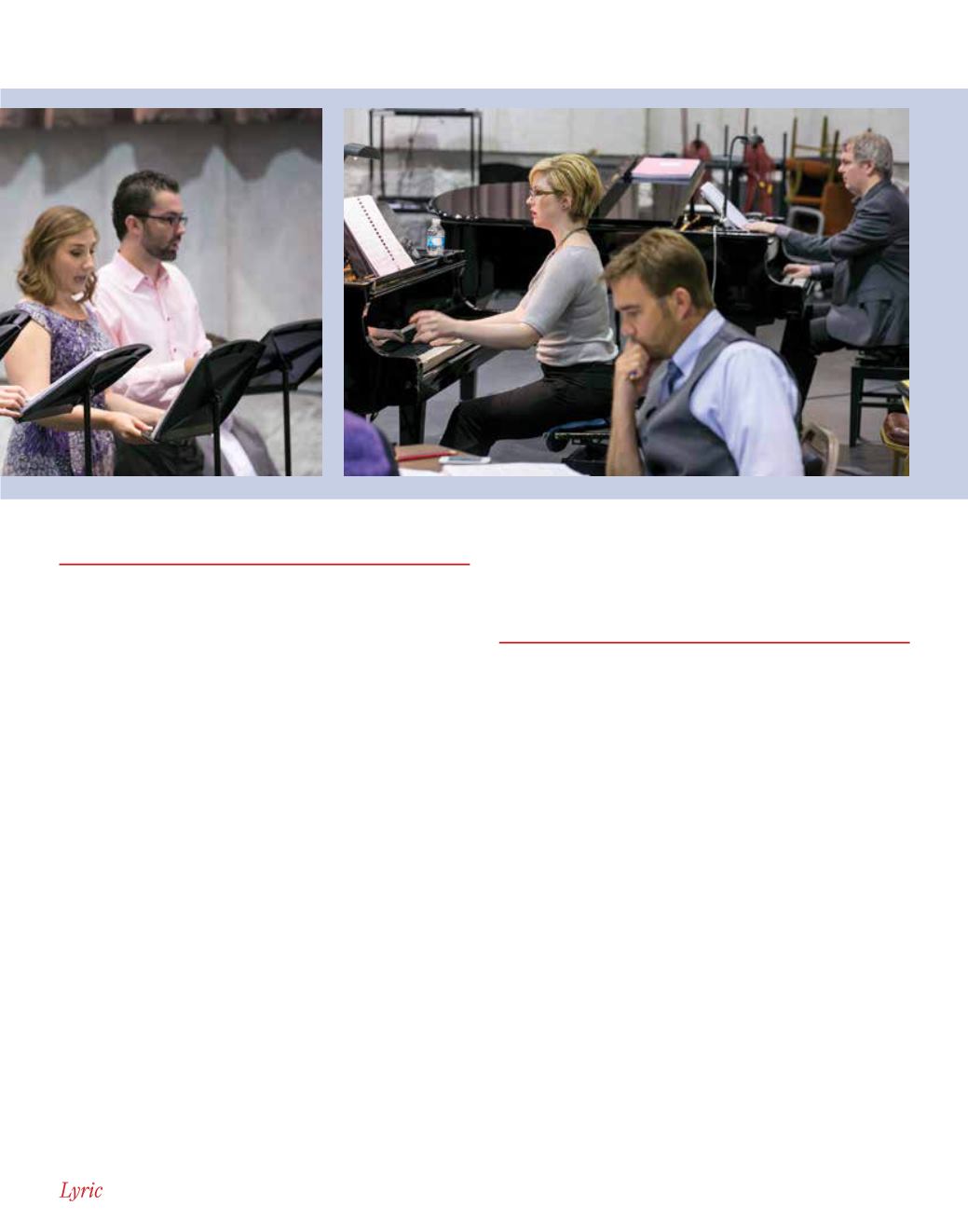

L Y R I C O P E R A O F C H I C A G O
December 7, 2015 - January 17, 2016
|
37
DAVID KORINS,
set designer
What were some of your inspirations in creating the designs
for this opera?
We looked at architecture of the time, place, and period, but
also at fantastical references, because there are some dreamscape
moments
.
We start by making an environment indicative of that
specific place, then we have these moments that break out of real-
ity completely, where we go deep into the jungle, or into a field
of stars, or rose petals.
This perfect and pristine place is set up for a party, but then
everything gets trashed. It’s exciting to think of a world where
we’re able to dress this space perfectly for an incredibly high-end
party that can intentionally get messed up!
We have the challenge of being able to show time passing.
The hostages were captive in that house for several months. Just
the challenge of ticking off the days on the walls, literally…that
was an interesting one that we had to R&D. So we have realism,
magical realism, moments of total abstraction; we also have pris-
tine all the way to a state of complete disrepair.
What excites you most about this design?
The walls actually bleed through, and you get this heightened the-
atrical view of what’s happening outside. We also peel back parts
of the walls to show you other whole and fleshed-out rooms. By
the way, Lyric has done an exquisite job building the set. Most
technical directors and scene shops would say, “There’s no way we
can possibly do this – physics are not on our side!” Lyric has not
only taken on the challenge, but has succeeded beautifully. I think
the audience is in for a real treat at the opera’s final moment,
when the entire house pulls away, breaks into pieces and disap-
pears. It’s really on point with the storytelling. The storytelling
is about this distanced and shattered memory of what that room
and what that experience was. The set manifests that and renders
it in a physical way.
CONSTANCE HOFFMAN
, costume designer
In working on your designs, what sort of research helped?
I read a book giving a hostage’s account of what happened. I
looked at articles, watched news footage, found photos of the hos-
tages. Of course, the novel departs from a lot of the actual details
of the crisis, and the opera does as well. But this work grounded
me, since we intended the opera to take place in the year that
the crisis actually happened. You do enough research to bring
the event into visual life, and you use the libretto to flesh out the
details of personalities and behavior. A lot of the reading brought
out human details that Kevin Newbury has used in staging that
affected the design of the stage, the props, the clothes, and how
the clothes are used.
The specificity of the gathering at the Japanese embassy
must have helped.
Yes, the real event was the celebration of the Emperor’s birthday,
which was being celebrated worldwide. I looked at what people
wore to events of that kind, and noticed that people tended to wear
clothes that might connect with that person’s ethnicity. There were
some Japanese elements of the women’s clothing choices – that
was a consistent thing internationally, not just in Peru. Because
Roxane knows what the event is, her evening gown has a kimono
reference in the sleeves and the back of the neckline that influenced
the design. I listened to the language of her first aria, when she’s
performing in that dress. She would have chosen it to perform this
specific piece of music, which has language about nighttime.
















